Species thought to be locally extinct are returning to the Knepp Estate, which is quietly influencing government policy
It’s the sort of June day that British summers should be made of, but rarely are. Pink flower-flecked brambles proliferate in knurled mounds, scattered across 3,500 sun-soaked acres of West Sussex scrubland audibly humming with bees. Curvy-horned cows chew rhythmically under shady old oaks among billowing stands of pussywillow and hawthorn. The birdsong is unreal. A thrush sends liquid top notes out across air punctuated by the raucous melody of a feathered orchestra. And above it all, a stork wheels.
If it weren’t for the plastic tags in the cows’ ears and the overhead drone of occasional passenger planes, we could be 600 years ago. That’s about the last time storks nested wild in England, Isabella Tree told me. A writer, farmer and owner of the Knepp Estate, Tree strides across this magnificently dishevelled landscape crafted by herself and her husband, Charles Burrell.
Rewind 23 years and this place was a debt-ridden, subsidy-dependent farm, its already poor soil made worse by intensive agricultural practices. There were certainly no storks.
But Tree and Burrell have helped nature re-establish its course at Knepp since then, in a process known as rewilding. Reintroducing white storks is merely the icing on the cake. Fencing has been ripped down, large mammals introduced, drains smashed, even a river rewiggled. Reintroduced beavers have masterminded a whole new wetland.
Now the place is thriving. Harvest mice, hedgehogs and hobby falcons, dormice, dung beetles and dingy skipper butterflies, among many others, have established themselves here. Surveys have found an astounding 650 invertebrates species (almost 10 per cent of the UK’s known vertebrates).
Humans have increased too: when a stork couple at Knepp became the first since 1416 to naturally breed in the UK during one of the 2020 lockdowns, the BBC show Springwatch featured it. The day lockdown was lifted, more than a thousand people rushed to see this marvel, Tree tells me.
“Storks are this kind of symbol of hope and rebirth and regeneration. And I think rewilding is giving a lot of people hope, and the storks are such an amazing emblem for that,” says Knepp’s lead ecologist, Penny Green.
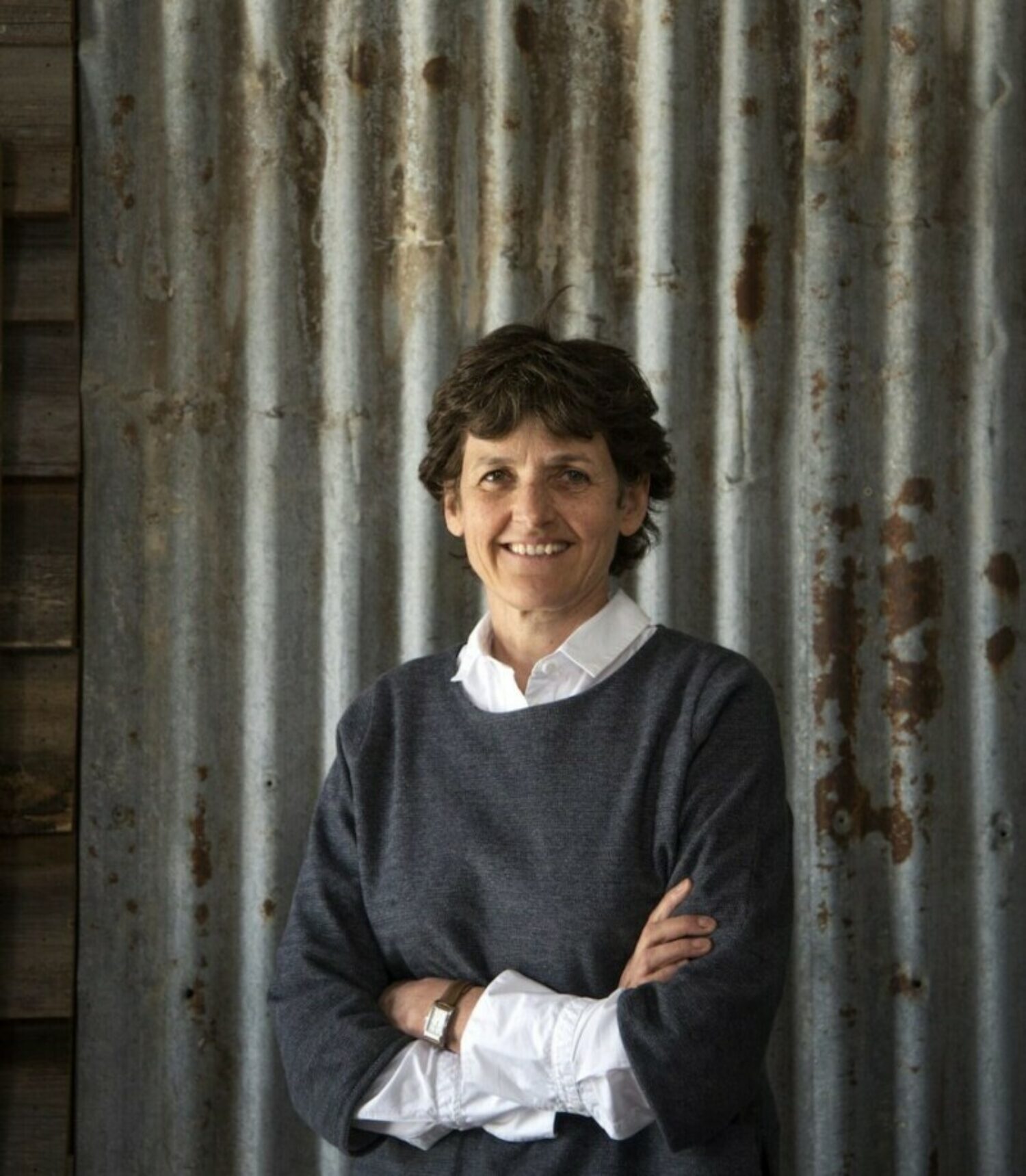
Isabella Tree runs Knepp with her husband, Charlie Burrell. Image: Anthony Cullen
Rewilding Knepp
Tree and Burrell inherited the Knepp estate in 1987. They spent 13 years battling the farm’s heavy clay landscape, which they say is “like concrete in summer and the rest of the year unfathomable porridge.”
They made money, dependent on subsidies, just twice in all that time. Something had to give.
In 2000, they sold off their dairy herds and machinery to offset huge debts and contracted out their arable land. But that was also the year Grazing Ecology and Forest History, by Dutch conservationist Frans Vera, was translated into English. The book so inspired Burrell and Tree that they went to see Vera and the landscape he stewarded in Oostvaardersplassen, the Netherlands.
The following year, armed with a Countryside Stewardship government grant, they withdrew their first fields from intensive agriculture.
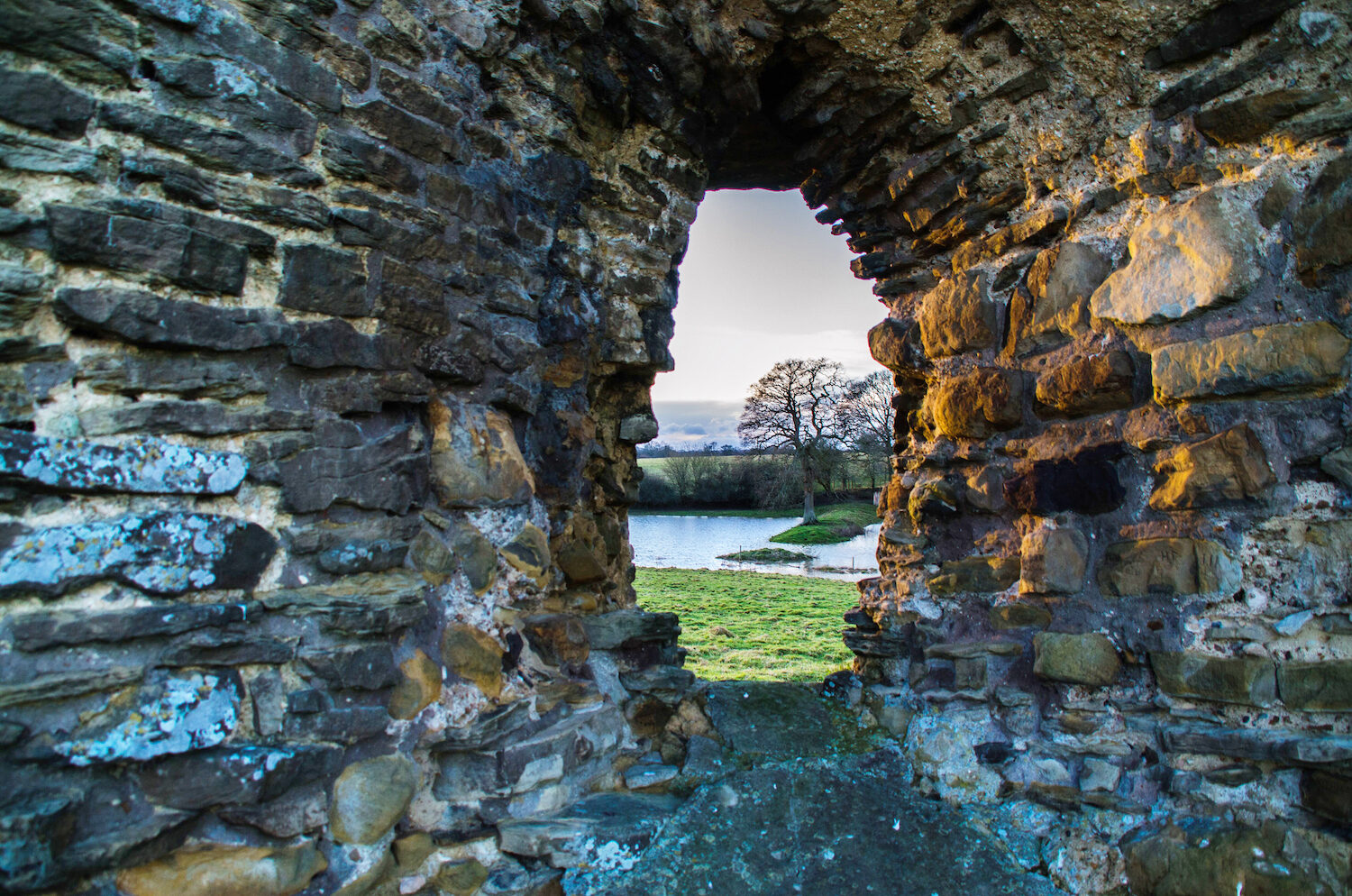
Two decades ago Knepp was a debt-ridden, subsidy-dependent farm. Image: Charlie Burrell/Knepp Wildland
“We weren’t brave enough just to say, ‘let’s rewild the whole thing,’” Tree says. It took six years to bring it all out of production, worst first.
By 2022, a green paper from the UK government’s Department for Environment, Food and Rural Affairs was hailing Knepp as a “huge success,” showing how restoring natural dynamics can quickly lead to nature recovery.
The estate’s income stream now includes renting out converted farm buildings as offices and event spaces, ecotourism safaris and accommodation, organic meat and their ongoing Countryside Stewardship grant.
“[The grant] is important to us and we hope that it will continue,” Tree says. “But if it doesn’t, we feel that we are actually now a self-sufficient business, which we never would have been if we’d have had subsidies removed from us when we were farming.”
On top of all the nature-hungry tourists, the farm now provides jobs to more than 50 workers.
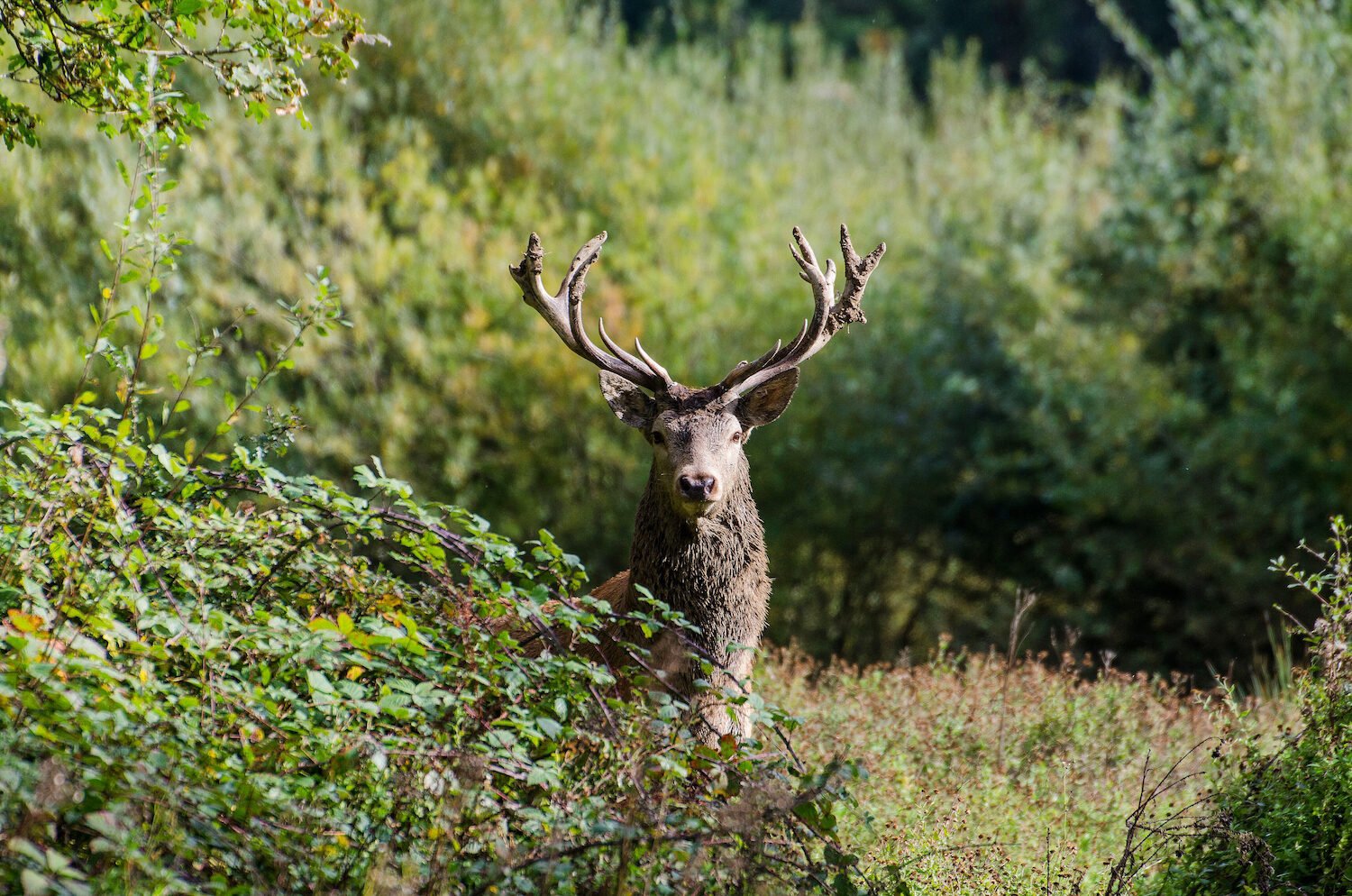
A red deer stag on the Knepp estate in mating season. Image: Charlie Burrell/Knepp Wildland
The depths of success
The success of Knepp runs deep, quite literally. Today, the soil alone is storing carbon at least as fast as models predict 25-year-old broadleaf woodlands do, according to research using new technology from the soil sampling company Agricarbon.
The UK government-funded research found that the rewilded soil absorbed up to 4.8 tonnes more carbon dioxide per hectare per year than soils in a conventional farm close by.
Such data is “absolutely crucial for underpinning any kind of incentive or investment in the restoration of carbon to the soil,” says Annie Leeson, the CEO of Agricarbon. “You can’t go to investors and say, ‘I want you to invest in 0.2 per cent increase in soil carbon.’ You have to say, ‘I want you to invest in something that’s going to deliver 3,000 or 30,000 or 300,000 tonnes of carbon removal.’”
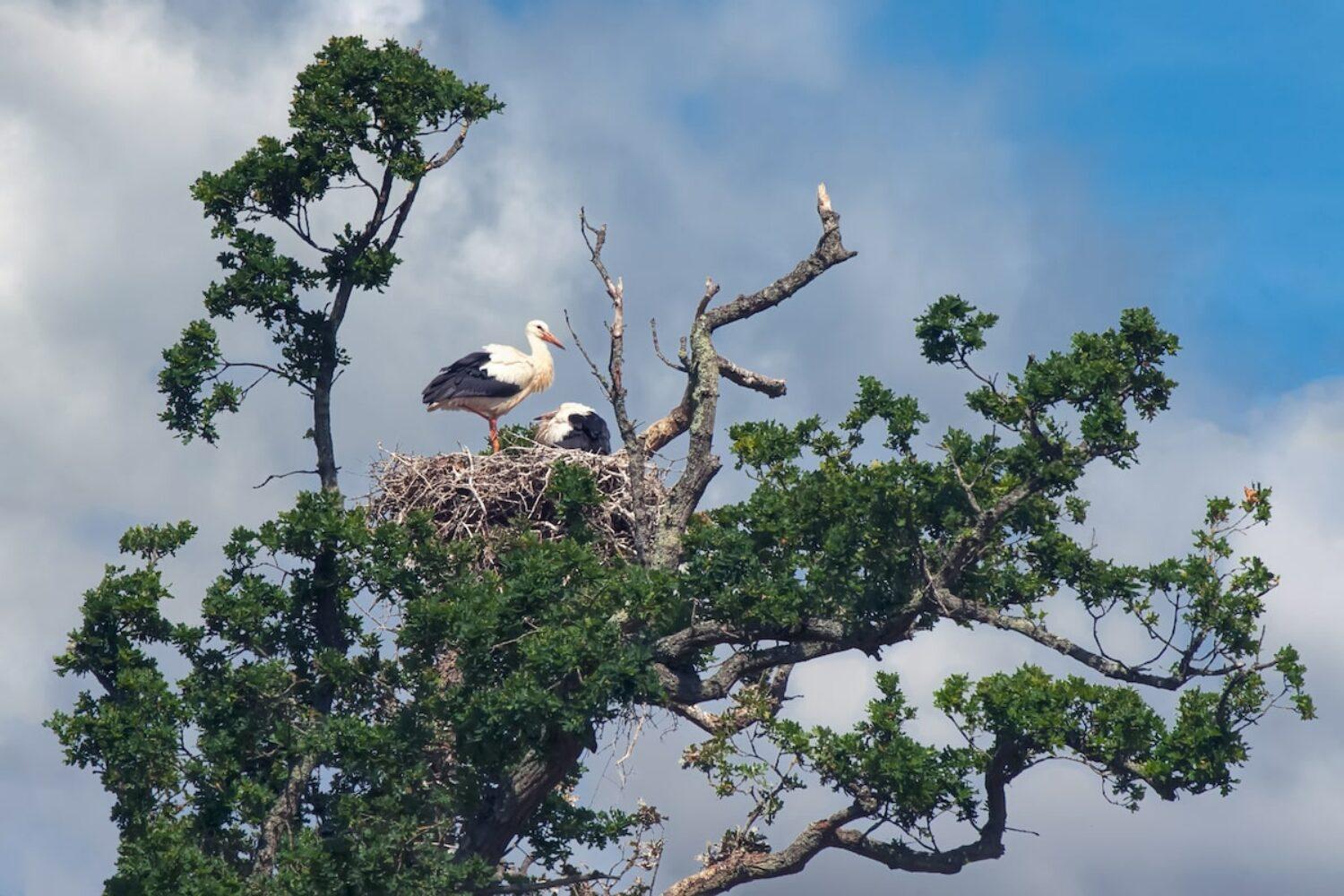
Storks breeding on the estate was ‘the icing on the cake’. Image: Sagesolar
Knepp’s soil data is the first to show that rewilding a farm can lead to statistically robust carbon sequestration in soils.
“It’s wonderful to have projects like Knepp producing the credible evidence that can help to convince policymakers that this is a viable way forward,” says Alister Scott , director of the Global Rewilding Alliance. “In order for rewilding to grow rapidly and scale globally, we clearly need to enable the flow of finance into a myriad of rewilding projects.”
Tree hopes the research will help secure a seat for rewilding at the carbon market table, as so far there are no investment products or market mechanisms that support rewilding.
“If you don’t have the [carbon] measurements you just cannot build any of that structure,” Leeson says. But Agricarbon’s technology and new findings unlock “a level of integrity that allows soil carbon to become part of carbon accounting.”
We have a dung beetle that hasn’t been seen in Sussex for 50 years
Buying carbon credits allows companies to compensate for their greenhouse gas emissions. But researchers have found the true quantity of carbon saved through regulated carbon credits is questionable. Carbon credit investment is going through an “ethical shakedown,” says Ivan de Klee, the head of natural capital at the UK-based nature recovery investment company Nattergal. There is a “cry for integrity” for real data, rather than modeling-based carbon offset options, de Klee adds.
Nattergal is using Agricarbon’s analysis of how much carbon is stored in Knepp’s soil, together with field analysis of how much carbon is stored in the scrubland’s woody biomass, to develop a more comprehensive, nature restoration investment tool.
“It’s a set of guidelines for people to use to make sure that what they’re selling is real, and that they’re maximizing the potential of rewilding systems,” says de Klee.
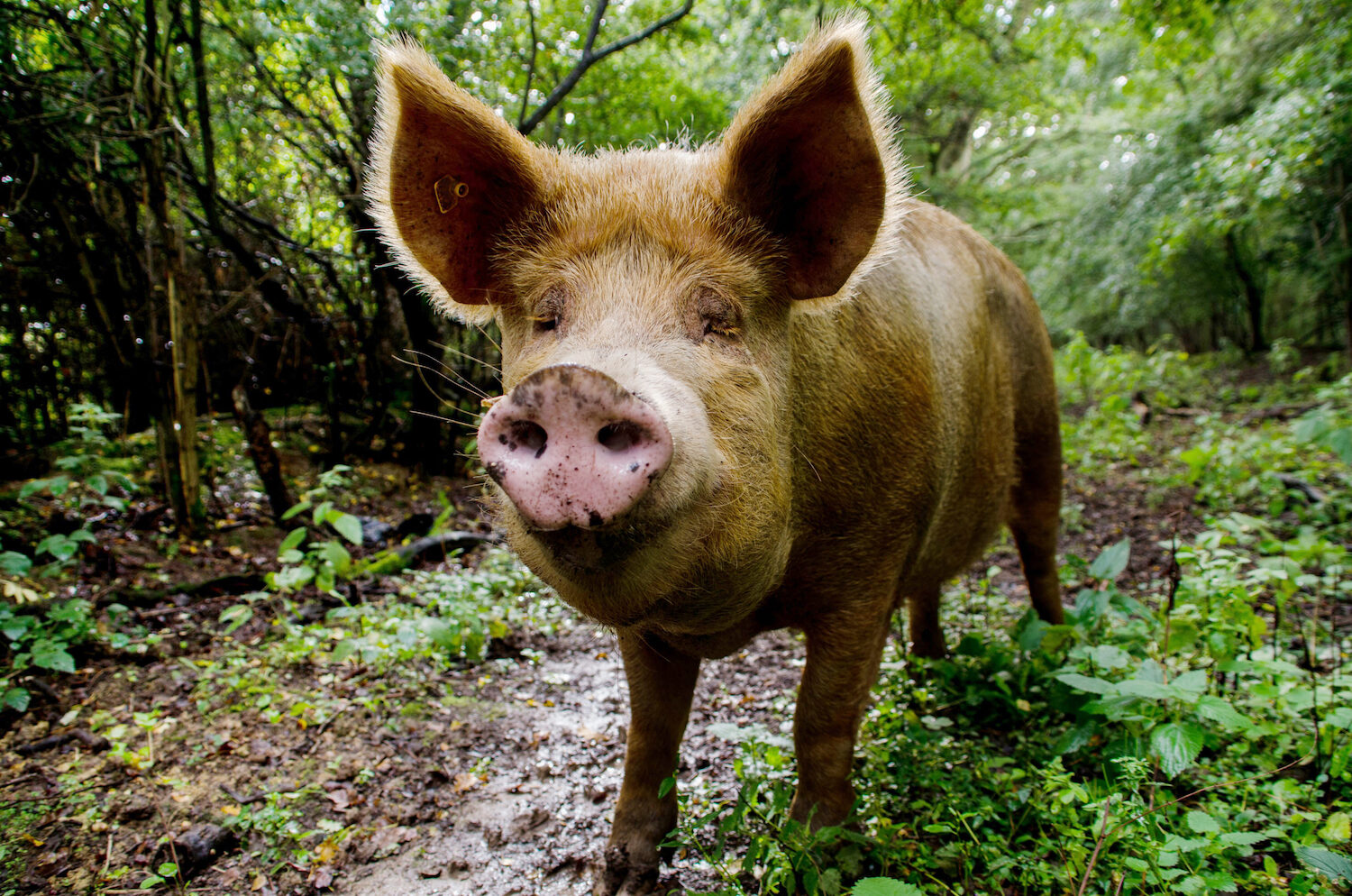
Tamworth pigs take on the role of their indigenous forerunner, the wild boar. Image: Charlie Burrell/Knepp Wildland
Birds and butterflies
One of Knepp’s achievements is its sheer diversity of life. Biodiversity, put simply, can clean our water, protect us from flooding and drought, increase how much food we grow and regulate our climate.
To rewild depleted areas, you have to “add stimulus to get the dynamism happening,” says Tree. Following Vera’s recommendations, Tree and Burrell introduced “stimulus” in the form of old English longhorn cattle, red and fallow deer, Tamworth pigs and Exmoor ponies. These animals act as proxies for their ancient cousins, aurochs, elk, wild boar and wild horses — former architects of English landscapes in bygone eras.
“Almost everything they do is contributing in a domino effect to a more functioning system that’s sequestering carbon,” Tree says.
Rewilding goes hand in glove with farming
This gradual tango between animal disturbance and plant growth is crucial to Knepp’s success. Tree explains that it’s the “constant competition” between vegetation and large herbivores — including their use of hooves and antlers as well as their eating habits — that creates homes for so many creatures.
“We cannot understand how these things reach us; it is extraordinary! I mean, we have a dung beetle, the violet dor beetle that hasn’t been seen in Sussex for 50 years. And it’s proliferating here!” she says, poking a cowpat with the toe of one of her navy trainers.
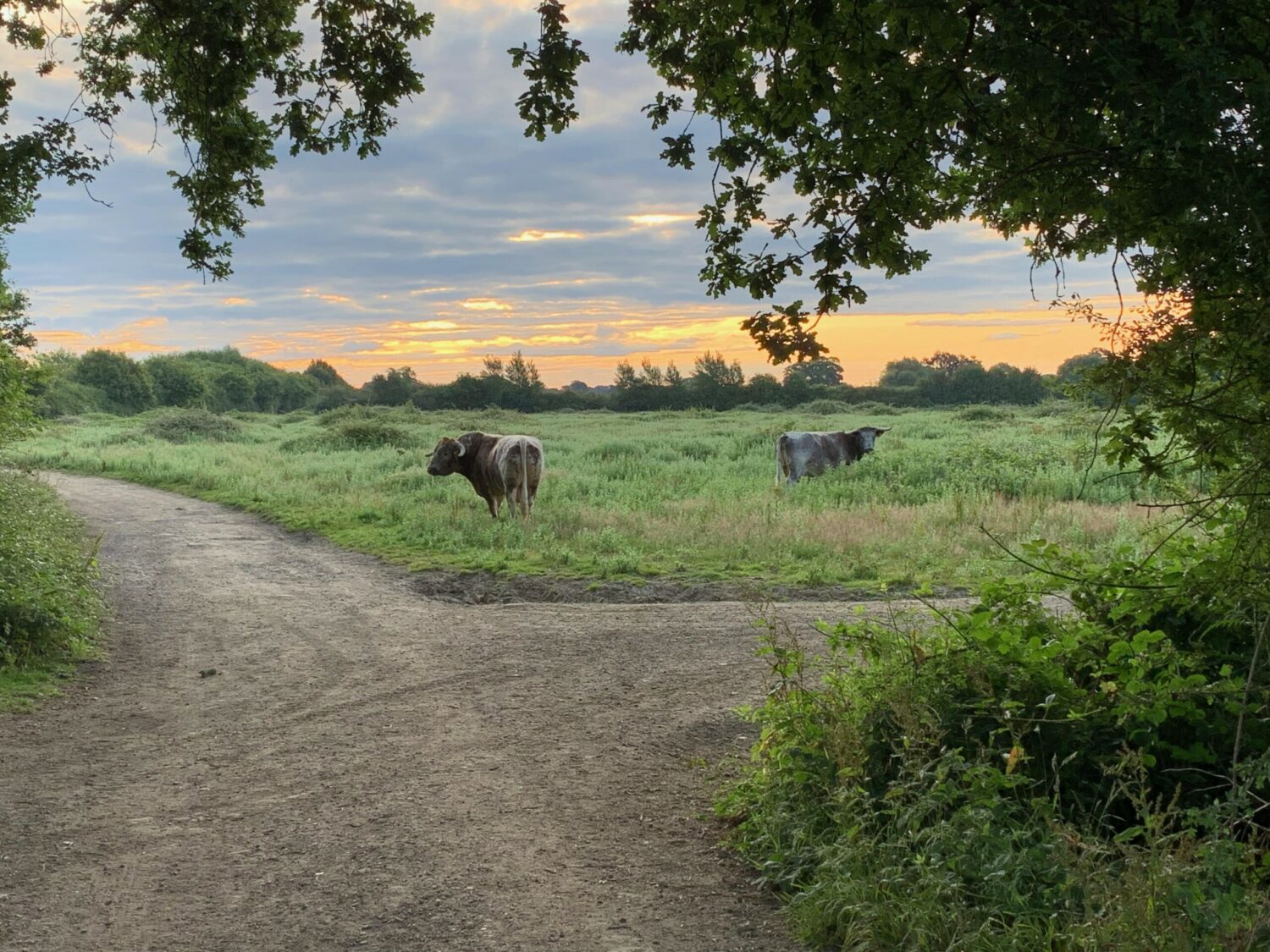
Free-roaming lLonghorn cattle help engineer the landscape at Knepp. Image: Matt Ellery
Last year the large tortoiseshell butterfly, thought to be extinct in the UK, formed a breeding colony at Knepp. The estate is also home to all of the UK’s five owl species, 13 of its 17 bat species and breeding populations of a dozen birds on the Royal Society for the Protection of Birds’ Red List.
Landscape management shake-up
Since leaving the EU, the UK is pivoting to a new environmental land management framework, in the most significant agricultural policy and spending reform in a generation.
Conventional agriculture practices erode topsoil, leaving it open to being washed away into the water system or blown away as dust, research has found. “We’re losing the foundation of all of our food production,” Leeson says.
The world loses 24bn tonnes of topsoil every year, reducing net economic output by up to eight per cent, according to a 2019 address by UN director general António Guterres. “With some extra investments, some incentives for farmers, you can restore soil carbon,” Leeson says.
Restoring organic carbon improves soil structure, allowing it to hold water, meaning more drought and flood resilience.
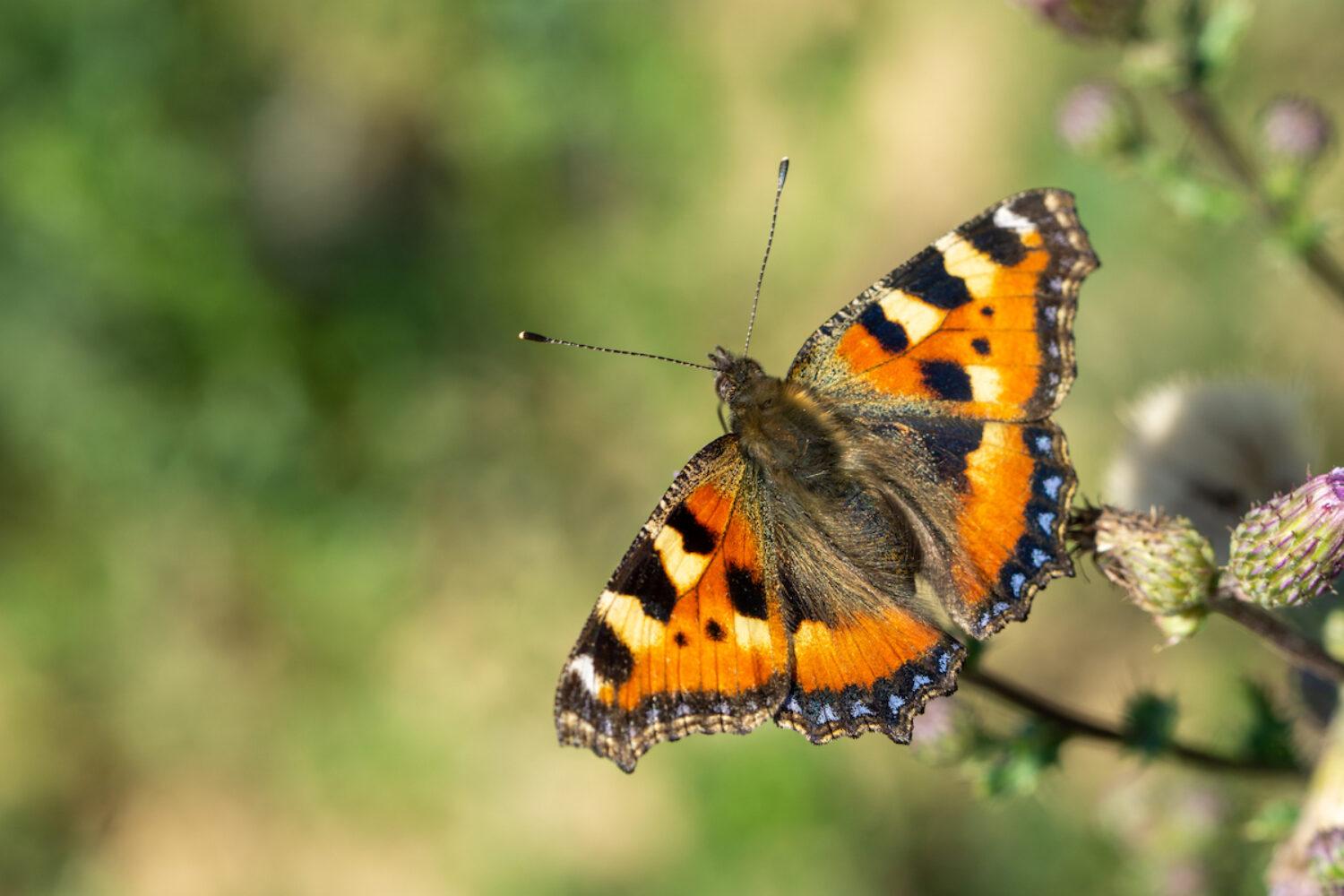
The large tortoiseshell butterfly, thought to be extinct in the UK, is breeding at Knepp. Image: Animaflora/iStock
“So, all of these things that we’re experiencing that are problematic as a result of climate change … are reduced if you can restore carbon to the soil,” adds Leeson.
In the UK, conventional farm subsidies that incentivise growing arable crops “irrespective of the damage it caused” according to Tree, are being removed and replaced with payments that incentivise biodiversity conservation and ecosystem services.
A government commitment of £2.4bn in annual incentives for land management practices that restore soil health, peatland and forests is part of the first revisions to the UK’s environmental improvement plan in 25 years. There is still a likely shortfall of up to £6.9bn per year that will have to come from private investment, according to an Environment Bank white paper.
People come to Knepp and see that miracles can happen in a very short space of time
“If we can generate a market whereby enhancements lead to sustainable revenue generation, then this enables investment from the private sector to bridge the funding gap,” says Andy Slaney, a future funding specialist from the government-backed Natural Environment Investment Readiness Fund (NEIRF).
NEIRF is currently funding 86 projects, with up to £100,000 each, to help build viable private sector investments for more ecosystem-centric land management. Their projects include both Agricarbon’s research and Nattergal’s investment tool.
Still, rewilding has its critics. The National Farmers Union (NFU) prioritises conventional food production and promotes the status quo. A press officer said that the NFU was interested in “maintaining the high levels of environmental protection we currently enjoy,” adding that rewilding is not a preferred staple land management option. The NFU considers it a threat to “treasured cultural landscapes” according to a consultation document submitted to the House of Commons Environmental Audit Committee.
“NFU think that we’re the devil,” says Tree. “They’re kicking back as much as they possibly can but there’s a lot of farmers out there who see the sense.”
Rewilding goes “hand in glove” with farming, she said. Rewilding spills over even into conventionally farmed land in terms of better pollination, natural pest control and better soil activity, which all lead to better yields and increased sustainability. It also buffers against increasingly extreme weather events, protecting land from drought, flooding and wind.
“It’s the life support system that’s going to actually hold agriculture and keep it sustainable,” says Tree. “If we don’t do this, we literally have only got a few decades of soil left, of anything that is going to produce food.”
Hope for the future
Rewilding has the potential to address both the climate and biodiversity crises, according to Scott with Global Rewilding Alliance. What’s needed, Scott says, is more awareness of its credibility and to establish viable investment mechanisms. Countries would never have signed the Paris agreement without the belief that cutting emissions could be economically viable.
“It feels like a similar process is now happening with rewilding,” Scott says.
The cool shady depths of the massive beaver pen back at Knepp, impervious to the heat of the day and surrounded by an herb-rich pasture a-flit with butterflies, affords a flash of promise for a better future.
“That’s the real value of Knepp, isn’t it? It’s the hope, you know?” Tree said. “You’ve got climate change and biodiversity loss and it’s huge and you think, how can I ever do anything that’s going to make a difference? And then people come to Knepp and they see that miracles can happen in a very short space of time.”
This article is republished from Mongabay under a creative commons license. Read the original article.
Main image: Little owls at Knepp. Credit: Ned Burrell
Help us break the bad news bias
Positive News is helping more people than ever to get a balanced and uplifting view of the world. While doom and gloom dominates other news outlets, our solutions journalism exists to support your wellbeing and empower you to make a difference towards a better future. And as Positive News’ audience and impact grows, we’re showing the rest of the media that good news matters.
But our reporting has a cost and, as an independent, not-for-profit media organisation, we rely on the financial backing of our readers. If you value what we do and can afford to, please consider making a one-off or regular contribution as a Positive News supporter. Give once from just £1, or join 1,000+ others who contribute an average of £3 or more per month. You’ll be directly funding the production and sharing of our stories – helping our solutions journalism to benefit many more people.
Join our community today, and together, we’ll change the news for good.
SUPPORT POSITIVE NEWS
